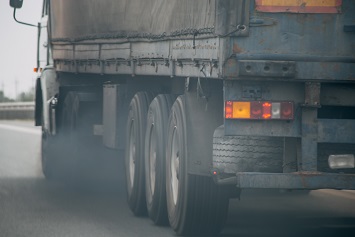In the second step taken under the Cleaner Trucks Initiative (CTI) it announced in November 2018, the EPA has released an advance notice of proposed rulemaking (ANPR) to solicit public comment on the outlines of proposed emissions standards for highway heavy-duty engines, which the Agency says it plans to issue in early 2020.
The standards would affect nitrogen oxides (NOx) and particulate matter (PM) emissions from both diesel- and gasoline-fueled highway heavy-duty engines. The Agency expects that a final rule will require that new vehicles meet the standards beginning in 2027. That compliance date would align any new NOx/PM standards with existing milestones for greenhouse gas (GHG) standards under the federal government’s Heavy-Duty Phase 2 GHG and fuel efficiency program.
EPA regulations generally classify vehicles with gross vehicle weight ratings above 8,500 pounds as heavy-duty vehicles; this category includes large pickup trucks and vans, a variety of work trucks designed for vocational applications, and combination tractor-trailers.
Stakeholder Petition
As described by the Agency, the CTI resulted at least in part from a petition the Agency received in summer 2016 from state and local environmental agencies. The petition emphasized the importance of additional NOx reductions to enable areas (and particularly Southern California) to attain the National Ambient Air Quality Standards (NAAQS) for ozone. (NOx is a precursor to both ozone and PM-2.5.) The current federal regulations governing heavy-duty engines were promulgated in 2001 and phased in between 2007 and 2010.
EPA Agrees—More Reductions Needed
The CTI indicated the EPA’s general agreement that NOx emissions from heavy-duty engines can and should be reduced beyond limits imposed by current standards.
“Although NOx emissions in the U.S. have dropped by more than 40 percent over the past decade, we project that heavy-duty vehicles continue to be one of the largest contributors to the mobile source NOx inventory in 2028,” states the EPA.
Emissions Control Technologies
The ANPR sketches out the general factors that would dictate the specifics of the proposal, including the EPA’s responsibility under the Clean Air Act (CAA) to set emissions standards for air pollutants, including NOx, from new motor vehicles or new motor vehicle engines, when the administrator finds cause that air pollution from these sources may endanger public health or welfare. The CAA goes on to state that the standards must reflect “the greatest degree of emission reduction achievable through the application of technology which the Administrator determines will be available for the model year to which such standards apply, giving appropriate consideration to cost, energy, and safety factors associated with the application of such technology.” Hence, a large part of the ANPR focuses on the many vehicle emissions control technologies the Agency is likely to consider when it proposes specific new emissions limits.
“The majority of the costs to comply with emission standards are directly related to the emission control technologies used by manufacturers,” states the Agency. “Technology costs include both the preproduction costs for activities such as research and development (R&D) and the costs to produce and warranty emission control components. Vehicle owners and operators may also incur costs related to compliance with emission standards if the requirements impact operating costs. EPA will evaluate technology and operating costs as part of the technological feasibility and cost analysis for new standards in the [notice of proposed rulemaking].”
50-State Standard
The Agency’s plans include setting standards that would apply in all 50 states. This approach will need to consider California’s anticipated low NOx proposal, which is expected to seek NOx emissions limits far below the current federal standards (more information at https://ww2.arb.ca.gov/our-work/programs/heavy-duty-low-nox/about). That proposal will also likely include updates to the state’s engine certification test procedures and heavy-duty in-use testing program that are expected to take effect in model year (MY) 2024. Updates to warranty, durability, and useful life provisions are also expected to apply in MY 2027.
The EPA is requesting comment on the extent to which EPA should adopt provisions similar to California’s and whether similar EPA requirements should reflect different stringency or timing.
“Commenters supporting EPA requirements that differ from the expected CARB [California Air Resources Board] program are encouraged to address how such differences could be implemented to maintain a national program to the extent possible,” the Agency states. “For example, how important would it be to harmonize test procedures, even if we adopt different standards? Also, how might standards be aligned if stringencies are harmonized, but timing differs?”
Comments on the ANPR are due 30 days after its publication in the Federal Register.

